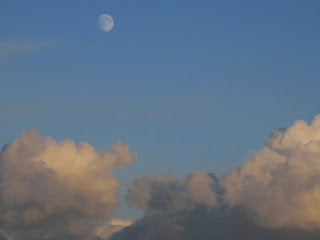
30th Dec. A couple of local group friends and I decided to walk the circular route from Monkseaton Metro Station which would take us along the disused Avenue rail line, through Holywell Dene, along to Seaton Sluice, then onwards to St Marys Island before returning to the start. It’s a route that North Tyneside council mapped out as worthy of a walk, although we added the trek as far as Seaton Sluice. It does take you though some very interesting habitat and having completed the walk in October I was aware that there was potential for lots of bird species.
We had soon ticked of a male Great Spotted Woodpecker near the beginning of the walk and the part of the avenue passing through the housing estate provided lots of garden birds, many perhaps attracted to the numerous bird feeders (good to see) along the route. Perhaps I’m dreaming, but I’m sure I heard over the last week of some research in Europe suggesting that garden birds should not be fed as it is making them obese! I must get the tape measure out and measure the waistbands of the House Sparrows that visit my garden. I do accept that the greed of many humans makes them obese, but I won’t be stopping feeding the birds. I haven’t seen any obese birds around this winter! Garden birds seen and heard on the Avenue included Song Thrush, Blackbird, Wren, Robin, Great Tit, Blue Tit, Long Tailed Tit, Starling, House Sparrow, Dunnock, Chaffinch, Greenfinch, and Goldfinch. Corvids and gulls were present also.
The pathway along the Avenue was still in the main icy although not too difficult to negotiate. Once out onto the open farmland there were few birds seen apart from large flocks of gulls. Small numbers of Curlew flew over. When we reached Holywell Dene we found the pathways still solid with slippery ice, to the extent that we chose not to enter the dene proper but walk along the path that runs parallel to the farmland. It was still tricky and tiring to negotiate. We did eventually find another Great Spotted Woodpecker which gave only a brief sighting as did a Treecreeper. I found a Little Grebe diving on th burn below us and a Cormorant flew down the burn. Other than that it was tit parties and Wood Pigeons in the main, although a skein of Greylag Geese did fly over.
The icy paths continued until we approached Seaton Sluice where the first Redshanks of the day were found and a lone Moorhen wandered along the bank. The cockerel called as per usual. I’m happy I don’t live next door to it! I don’t mind the call early in the morning, but this one just never seems to stop.
After having been fed and watered we were off along the cliff side and finding Eider Duck, large numbers of Redshank, the flock of Knot, Oystercatcher and Turnstone. Then it went extremely quiet again with the light already appearing to go in the early afternoon. The walk was enjoyable and tranquil as there were few people about but there few birds also. However at least now we were off the ice. It had been an energy sapping walk up to this point. A Grey Heron was seen flying from the sea edge towards the fields.
At St Mary’s Island we found the wetland pond still frozen. There were Mute Swans and numbers of Teal on the sea edge, and also three Goldeneye where present. There were quite large flocks of wader here also including Dunlin, Sanderling, Turnstone, Redshank and Oystercatcher. I managed to find one Purple Sandpiper and there were four Bar-Tailed Godwits feeding at the waters edge. So we were ending with a good number of wader species although I never saw any Golden Plover at all, and only very small numbers of Lapwing and assume these flocks to have been inland feeding.
Instead of making back to Monkseaton, initially following a route at the back of the crematorium, we decided to walk along the beach to Whitley Bay. The light was really low now. I was tiring and I reckon by the end of the walk we must have completed almost eight miles, much of it on very icy paths. We ended with a list of forty-six species. Not a great list, but it had been a really good walk. Probably my last long walk for 2010. I suppose it’s too much to ask to have a Redpoll in my garden on New Years Eve?





































